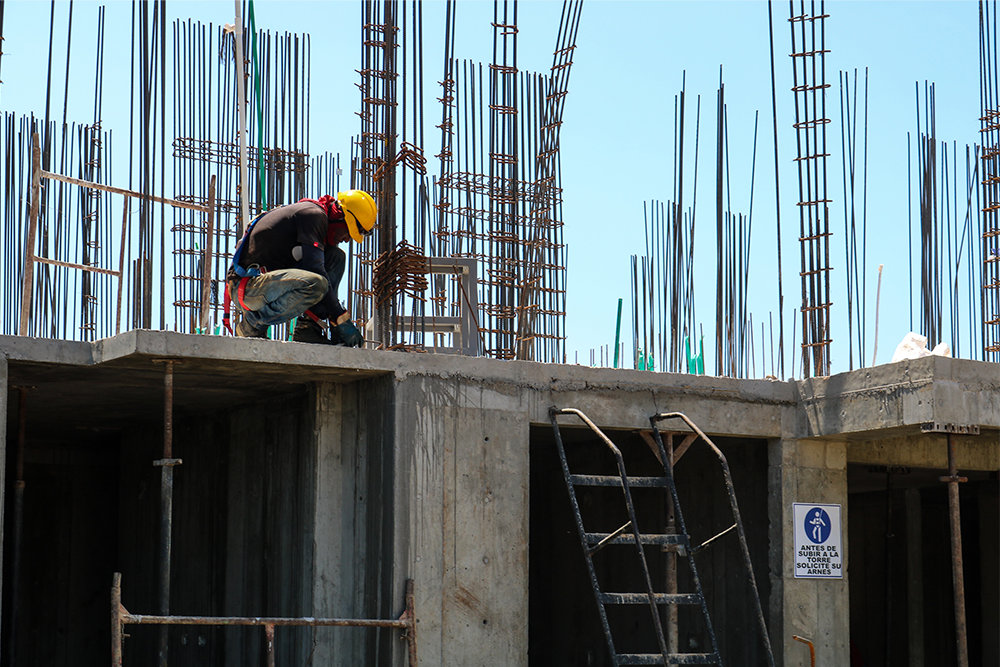Can the US meet its infrastructure demands?
Failing to invest in infrastructure has a real impact – longer travel times, unreliable and expensive power and water. Those problems translate into higher costs for businesses which are, in turn, passed along to workers and families.
It’s little wonder, then, that US President Joe Biden is planning a US$2 trillion investment in sustainable infrastructure over his first term.
It’s an investment that many would agree is well overdue. In its last report card on the status of infrastructure in the US, the American Society of Civil Engineers (ASCE) graded the performance of 16 sectors, giving 12 a D (Poor), three a C (Mediocre), and only one, Rail, scoring a B (Good). Can the US ever catch up to its infrastructure needs?
Widening infrastructure gap
In January 2021, the ASCE released its latest Failure to Act report which estimates that the US is facing a US$5.6 trillion investment gap by 2039.
One solution to this looming shortfall could be to create more opportunities for private investment in infrastructure projects through public-private partnership models (PPPs).
Record investor appetite
Back in 2017, the investor appetite to support PPPs was clearly strong with US sitting untouched in infrastructure-focused private equity funds, according to Prequin.
Unlike in countries such as Australia and the United Kingdom, PPPs are not commonplace in the US, with many state and local governments instead relying on tax-preferred municipal bonds to fund projects. The need for some kind of revenue stream, such as a toll, fare, or tax, to provide funding also acts as a deterrent; as does the fact that many states simply have limited experience with or knowledge of PPPs.
Unfortunately, that lack of experience has adversely affected some projects funded under PPP agreements, potentially discouraging other governments from pursuing similar arrangements.
For example, the Purple Line light rail project in Maryland is only 40 per cent complete and running over two years behind schedule as local government seeks new contractors, according to a January report in The Washington Post.
Success stories
However, there are many other examples that demonstrate how PPPs can effectively fund and facilitate the delivery of major infrastructure projects. Here are just three examples:
Pennsylvania Rapid Bridge Replacement Project
Concern over the timely fixing of 550 structurally deficient bridges across Pennsylvania prompted the Commonwealth government to forge a PPP between the Pennsylvania Department of Transportation and the Plenary Walsh Keystone Partners consortium.
The work is being delivered as a Design-Build-Finance-Operate-Maintain project. According to the Pennsylvania Department of Transport: “Its success could augur well for similar projects to roll out across the country."
Kentucky broadband network
In order to quickly ramp up internet speed and availability across the state, Kentucky formed a PPP with Macquarie Capital and a team of market specialists to design, build, operate, and the network for 30 years.
KentuckyWired is a state-run project constructing at least 3,000 miles of high-speed, high-capacity fibre optic cable in every county in Kentucky. Construction began in mid-2015 and is now 95 per cent complete.
Texas Vista Ridge water pipeline
An international consortium led by Sumitomo Mitsui Banking Corp. formed a PPP with the city of San Antonio Texas to build the $920 million Vista Ridge Project.
The project – one of the largest PPPs in the US water sector – will deliver a water pipeline and well field that is expected to increase San Antonio’s water supply by 20 per cent for at least the next 30 years.
Key takeaway
This effort can be furthered by pursuing some of the recommendations contained in the Global Infrastructure Hub’s InfraCompass analysis of the US. In particular, publishing a national project pipeline and a national infrastructure plan to create greater awareness and transparency across the sector.
Finally, the US remains the only major developed country without a national infrastructure bank and establishing one would undoubtedly help accelerate private investment nationwide.

 PPP Contract Management Tool
PPP Contract Management Tool




